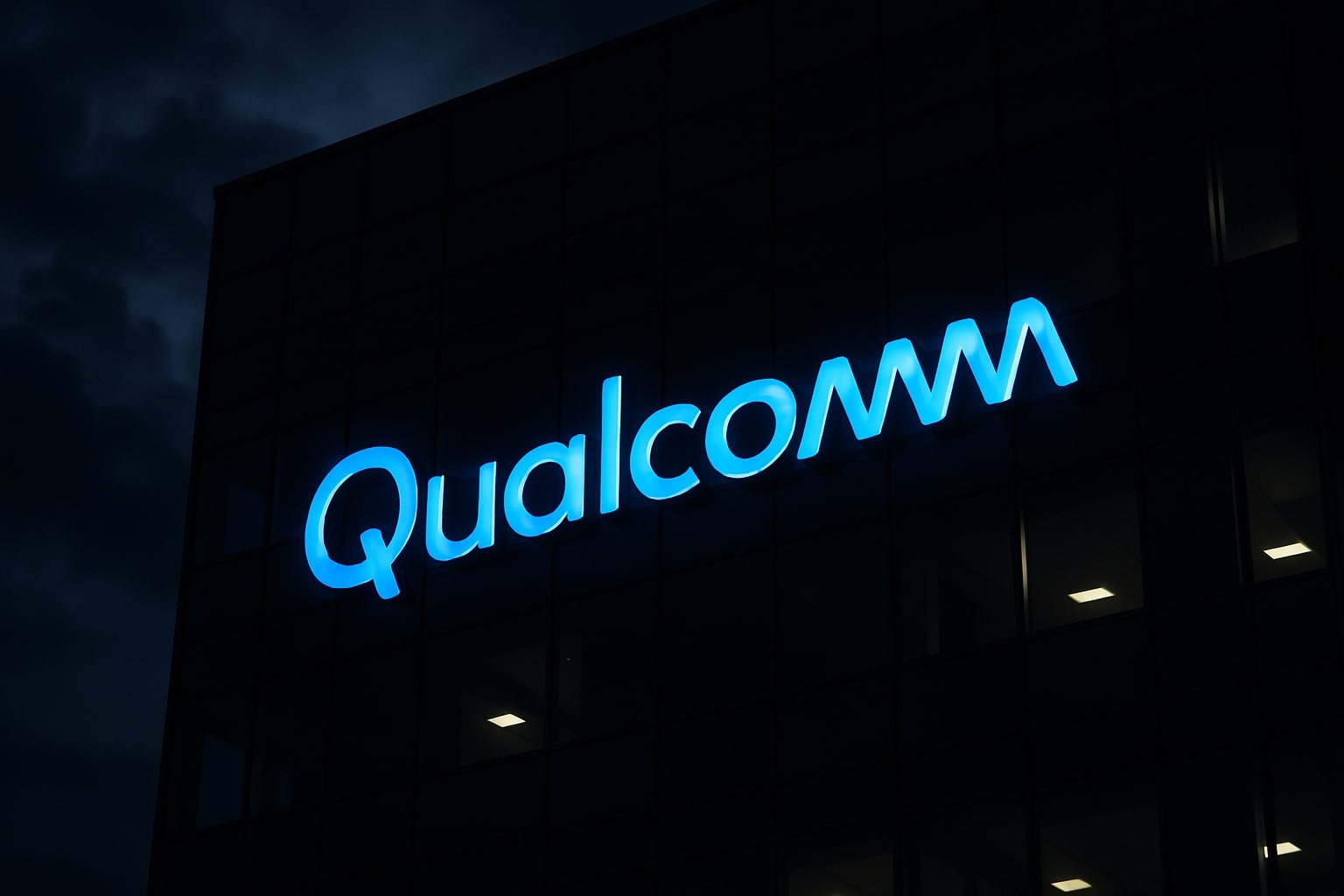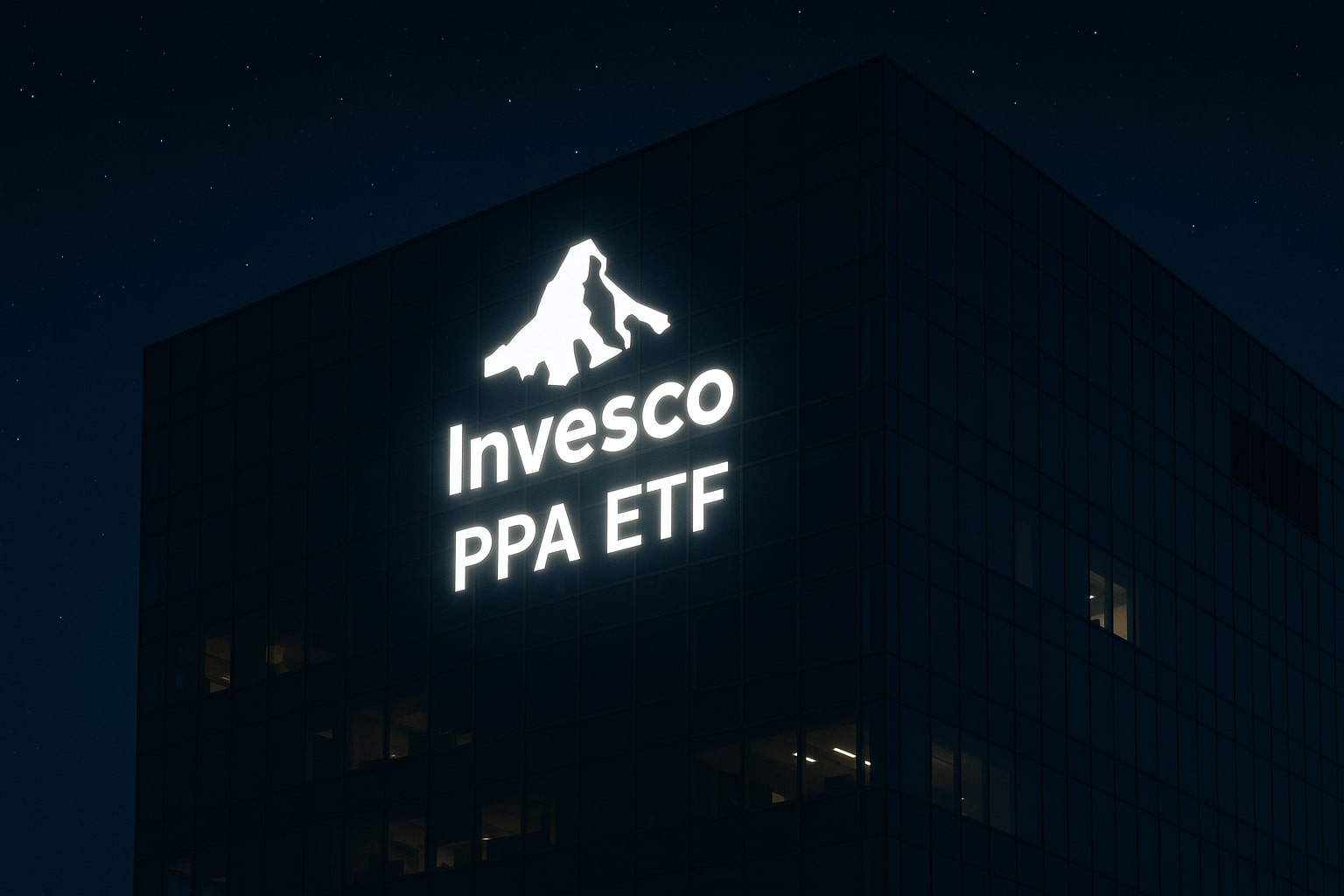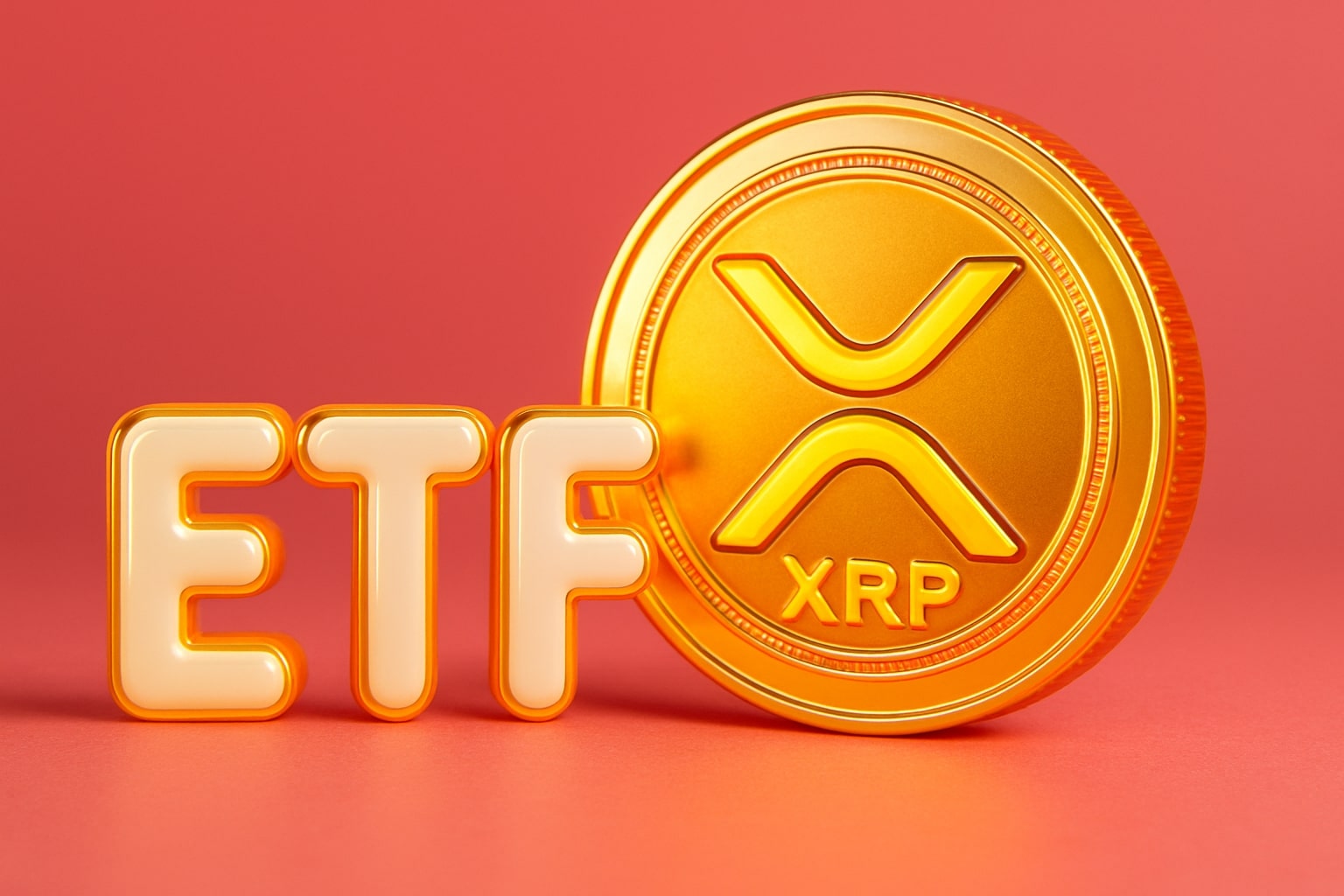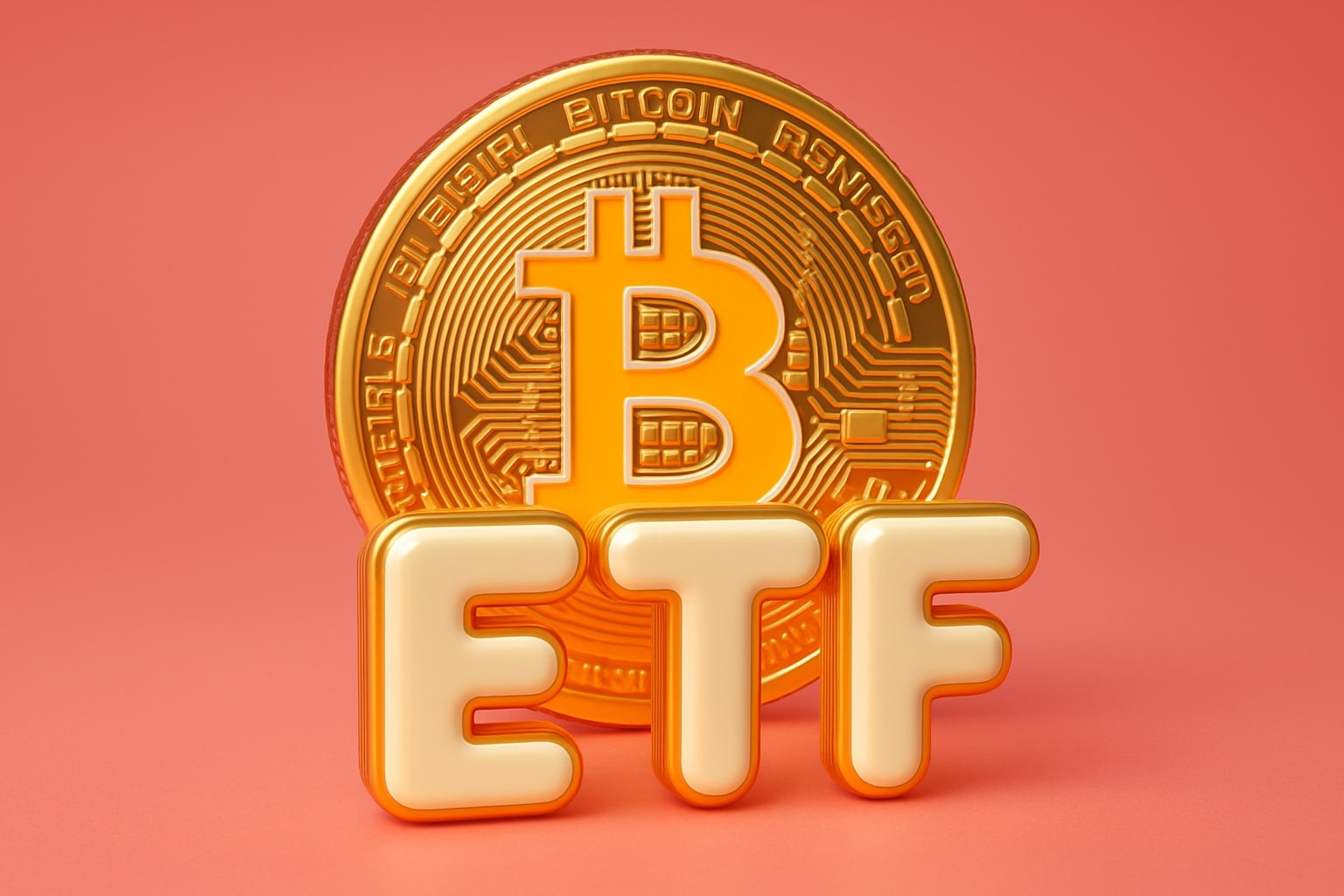
Qualcomm Stock Price (NASDAQ:QCOM) Soars 19% to $190 After AI200 Launch and Saudi AI Pact
AI200 and AI250 accelerators redefine Qualcomm’s shift into data center AI as Q2 profit climbs 25%, HUMAIN Saudi deal adds 200MW in AI infrastructure | That's TradingNEWS
Qualcomm (NASDAQ:QCOM) Soars as AI Expansion Redefines Growth Outlook
Qualcomm (NASDAQ:QCOM) surged nearly 19% to $190.20, adding more than $30 billion in market capitalization in one session and signaling a dramatic re-rating of its long-term prospects. The move followed the launch of the company’s new AI200 and AI250 accelerators—its first full-scale entry into the data center AI race—positioning the chipmaker as a new contender against Nvidia (NASDAQ:NVDA) and AMD (NASDAQ:AMD). The products mark a structural evolution for Qualcomm, historically known for smartphone and mobile connectivity chips, into high-performance computing for enterprise AI infrastructure. The market responded decisively: trading volume exceeded $5.5 billion, making QCOM one of the most actively traded stocks on the Nasdaq that day.
The AI200, launching in 2026, and the AI250, coming in 2027, will use Qualcomm’s proprietary Hexagon NPU architecture, optimized for inference performance rather than model training. The company emphasized that its designs focus on efficiency and cost-effectiveness—critical metrics for hyperscale data centers struggling with escalating energy costs. The AI250 promises a tenfold increase in memory bandwidth versus the AI200, setting a foundation for scalable AI workloads across industries. These chips integrate up to 768 GB of LPDDR memory per card and use direct liquid cooling, dramatically reducing power consumption. Qualcomm aims to undercut Nvidia’s high-cost GPU clusters with superior total cost of ownership metrics—a key consideration for cloud and enterprise customers seeking sustainable AI infrastructure.
The company’s boldest strategic move, however, came from its newly announced partnership with HUMAIN in Saudi Arabia. Qualcomm will deploy 200 megawatts of AI rack infrastructure, equivalent to roughly 1,250 racks at 160 kW each, across 2026–2027. This initiative positions Saudi Arabia as a future AI hub and signals Qualcomm’s intent to participate in national-scale technology programs, not just consumer or mobile ecosystems. CEO Cristiano Amon described the partnership as a foundation for “a new global phase of intelligent computing,” suggesting the firm’s ambition now extends well beyond handset chips. The deal could mark the company’s first meaningful recurring revenue stream from sovereign data centers, diversifying it from the cyclical smartphone market.
Read More
-
PPA ETF at $154: Can This Defense ETF Keep Beating ITA and SPY?
14.12.2025 · TradingNEWS ArchiveStocks
-
XRP ETFs XRPI and XRPR Pull In $975M While XRP-USD Fights To Hold $2
14.12.2025 · TradingNEWS ArchiveCrypto
-
Natural Gas Price Forecast: NG=F Hits $4.11 As Warm Winter Outlook Puts $3.913 Support At Risk
14.12.2025 · TradingNEWS ArchiveCommodities
-
USD/JPY Price Forecast - Dollar to Yen Can BoJ’s 0.75% Shock Break The 155–158 Range?
14.12.2025 · TradingNEWS ArchiveForex
Financially, Qualcomm remains on solid ground. In its latest quarter ending June 2025, revenue reached $10.37 billion, up 10.35% year-over-year, while net income rose 25.22% to $2.67 billion. Earnings per share advanced 18.9% to $2.77, and operating expenses were held at $3 billion, slightly down from the prior year. The net margin of 25.7% highlights strong operational leverage, while EBITDA rose 19.7% to $3.16 billion. The effective tax rate of 9.7% further supports earnings quality. On the balance sheet, Qualcomm reported $54.86 billion in total assets and $27.65 billion in liabilities, resulting in $27.21 billion in equity. Although cash and short-term investments fell 23.18% to $10.01 billion, the company continues to fund aggressive R&D investment in AI and automotive. Its return on capital stands at 16.37%, signaling exceptional efficiency compared to peers, while the free cash flow of -$1.32 billion reflects expansion-heavy spending rather than structural weakness.
Institutional behavior surrounding QCOM has intensified alongside this rally. Over the last quarter, 1,233 funds increased their holdings while 1,301 reduced, showing high turnover among large investors. Kingstone Capital Partners completely divested its 58.7 million-share, $9.8 billion stake, while Amundi added 3.2 million shares (+38%), Barclays PLC grew by 2.1 million shares (+34%), and Jacobs Levy Equity Management boosted its position by more than 500%, acquiring nearly 2 million shares. UBS Asset Management Americas followed with 1.9 million additional shares (+18%), confirming renewed institutional conviction. This heavy rotation shows that while some funds took profit after QCOM’s rally, others are rotating in with conviction around the AI strategy. Institutional ownership now exceeds 76%, one of the highest among semiconductor peers.
Insider trading data tells a more complex story. In the past six months, insiders executed 32 sales totaling over $30 million, with no recorded insider purchases. According to Qualcomm’s insider activity records, CEO Cristiano Amon sold 150,000 shares (~$25 million) in three transactions, while CFO Akash Palkhiwala sold 25,000 shares (~$3.9 million). Other executives, including Heather Ace, Neil Martin, and Patricia Grech, also sold smaller portions. While these moves may reflect profit-taking amid the sharp price appreciation, the absence of insider buying during such a critical pivot suggests management confidence lies more in strategic execution than signaling undervaluation. Still, institutional inflows have largely absorbed this selling, stabilizing the market reaction.
Analyst sentiment remains broadly positive. Of 13 major analysts covering the stock, seven rate it a Buy, five a Hold, and one a Sell. Price targets cluster between $165 and $225, with a median at $175. Rosenblatt’s Kevin Cassidy leads the bullish camp at $225, while Susquehanna and JP Morgan maintain $200 targets, both citing strong AI optionality. Citigroup and UBS sit more cautiously at $170–$165, suggesting the current valuation already reflects near-term optimism. The stock’s P/E ratio of 18.3 and P/S ratio of 4.9 remain modest compared to Nvidia’s P/E above 40, leaving headroom for revaluation if Qualcomm’s AI segment begins generating revenue by fiscal 2026. The company’s Altman Z-Score of 6.58 points to excellent financial stability, while its beta of 1.52 underscores higher volatility—a natural byproduct of sector momentum and speculative inflows.
Technically, the stock broke decisively through its previous 52-week high of $205.95 intraday before settling at $190.20, up from a $168.94 prior close. The breakout confirms a shift in sentiment as Qualcomm repositions from a mobile-centric company into a diversified AI infrastructure player. The current price implies a forward price-to-book of 6.73, supported by expanding profitability and structural tailwinds in AI, automotive, and edge computing. Revenue growth of 10.35%, combined with double-digit EPS acceleration, gives the company leverage to outperform traditional semiconductors tied solely to PC and handset cycles.
Despite the recent run, the stock’s risk profile remains manageable. The absence of insider buying and Kingstone’s massive exit create short-term caution, but they are offset by the long-term potential of Qualcomm’s AI roadmap and institutional repositioning. The HUMAIN partnership, in particular, provides a unique geographic hedge—linking Qualcomm to Middle Eastern capital and infrastructure spending at a time when U.S. tech valuations remain stretched. As the company diversifies away from its smartphone roots, its focus on inference computing—rather than training—targets the largest and most scalable AI use cases: cloud deployment, on-device acceleration, and industrial automation.
Considering the numbers, Qualcomm’s fundamentals justify its re-rating. With net margins near 26%, a forward P/E under 19, and ROE above 40%, the valuation remains defensible relative to its growth trajectory. The AI catalysts now embedded in its roadmap could generate incremental revenue of several billion dollars annually by 2027 if even modest adoption materializes. Given its leadership in wireless IP, expanding NPU portfolio, and now credible data center footprint, Qualcomm has transformed from a cyclical handset supplier into a diversified AI computing company. Based on the current setup, Qualcomm (NASDAQ:QCOM) merits a Buy rating—supported by institutional conviction, strategic expansion, and improving operating leverage—even as near-term volatility may test investor conviction before the AI200 and AI250 ramp into full commercial availability.


















